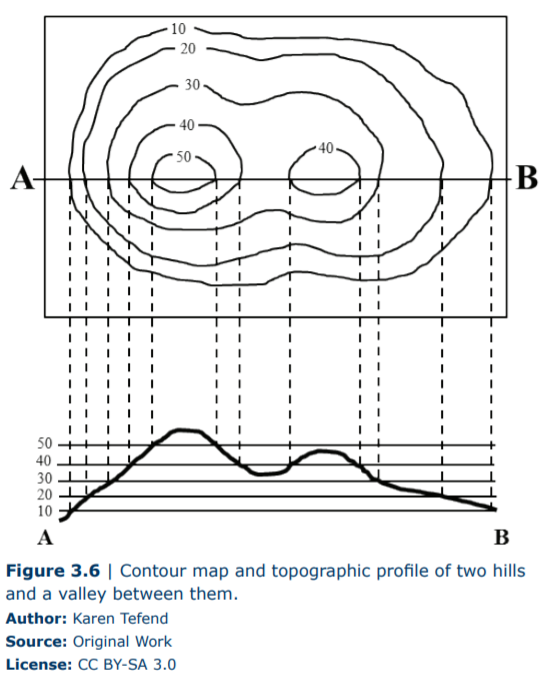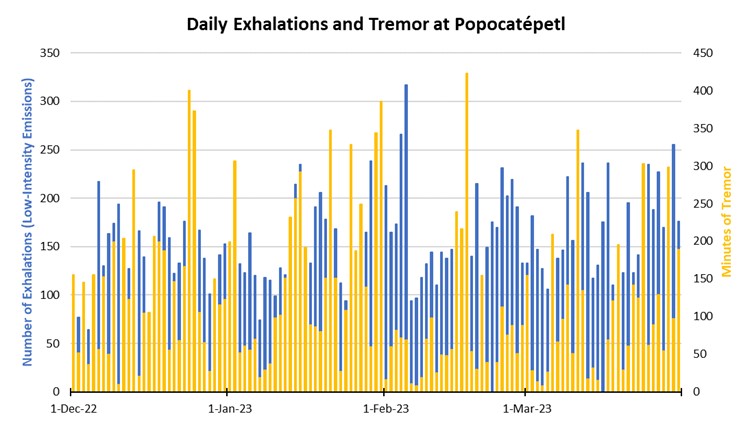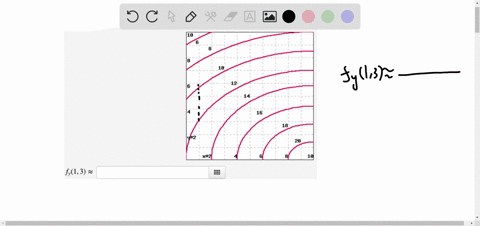Approximate fx(3; 5) using the contour diagram of f(x; y) shown in the gure below. 5. The gure below shows the contours of f(x; y) with values of f on the contours omitted. If fx(P ) > 0, nd the signs of fy(P ), fx(Q), and fy(Q). 6. The surface z = f(x; y) is shown in the (a) What is the sign of (i) fx(A) (ii) fy(B)
April 5, 2021—Kīlauea summit eruption contour map | U.S. Geological Survey
You create a contour diagram corresponding to a function z = f(x; y) by creating a topographical map of its graph. You choose equally spaced elevations z = c for a bunch of values c, you nd points on the graph for each elevation z = c, and then you project the curves on the graph onto the xy-plane.

Source Image: chegg.com
Download Image
Step 1: Start with the graph of the function. Step 2: Slice the graph with a few evenly-spaced level planes, each of which should be parallel to the x y -plane. You can think of these planes as the spots where z equals some given output, like z = 2 . Step 3: Mark the graph where the planes cut into it. Step 4: Project these lines onto the x y

Source Image: geo.libretexts.org
Download Image
11.3 Ex: Approximate partial derivatives at the given point, using the contour diagram – YouTube 1. Sketch a contour diagram for the function with at least four labeled contours. f(x; y) = x2 y2 f(x; y) = cos px2 + y2. The two images below show the graph of f(x; y) = x2 + y2 being sliced by horizontal planes, and the accompanying contour diagram. The graph of f(x; y) = x2 + y2 Contour diagram for f(x; y) = x2 + y2 Examples: 2.

Source Image: volcano.si.edu
Download Image
Approximate Using The Contour Diagram Of Shown Below.
1. Sketch a contour diagram for the function with at least four labeled contours. f(x; y) = x2 y2 f(x; y) = cos px2 + y2. The two images below show the graph of f(x; y) = x2 + y2 being sliced by horizontal planes, and the accompanying contour diagram. The graph of f(x; y) = x2 + y2 Contour diagram for f(x; y) = x2 + y2 Examples: 2. A contour diagram is a second option for picturing a function of two variables. Suppose a function h(x; y) gives the height above sea level at the point (x; y) on a map. Then, the graph of h would resemble the actual landscape.
Global Volcanism Program | Popocatépetl
A contour map for a function f is given. Use it to estimate fx(2; 1) and fy(2; 1). Solution: We can estimate fx by observing that as x goes from 1.5 to 2.5, with y = 1 xed, f seems to go from about 9 to 12. Therefore fx(2; 1) is approximately 3. As y goes from 0.5 to 1.5, with x = 2 xed, f goes from about 11 to about 9, so fy(2; 1) is roughly -2. SOLVED: Approximate f(x,1) using the contour diagram of f(x,y) shown below: fx(1,3)

Source Image: numerade.com
Download Image
A Closer Look at Audemars Piguet Royal Oak’s 50th Anniversary Watch Models – Bestwatch.sg A contour map for a function f is given. Use it to estimate fx(2; 1) and fy(2; 1). Solution: We can estimate fx by observing that as x goes from 1.5 to 2.5, with y = 1 xed, f seems to go from about 9 to 12. Therefore fx(2; 1) is approximately 3. As y goes from 0.5 to 1.5, with x = 2 xed, f goes from about 11 to about 9, so fy(2; 1) is roughly -2.

Source Image: bestwatch.sg
Download Image
April 5, 2021—Kīlauea summit eruption contour map | U.S. Geological Survey Approximate fx(3; 5) using the contour diagram of f(x; y) shown in the gure below. 5. The gure below shows the contours of f(x; y) with values of f on the contours omitted. If fx(P ) > 0, nd the signs of fy(P ), fx(Q), and fy(Q). 6. The surface z = f(x; y) is shown in the (a) What is the sign of (i) fx(A) (ii) fy(B)

Source Image: usgs.gov
Download Image
11.3 Ex: Approximate partial derivatives at the given point, using the contour diagram – YouTube Step 1: Start with the graph of the function. Step 2: Slice the graph with a few evenly-spaced level planes, each of which should be parallel to the x y -plane. You can think of these planes as the spots where z equals some given output, like z = 2 . Step 3: Mark the graph where the planes cut into it. Step 4: Project these lines onto the x y

Source Image: youtube.com
Download Image
Solved (1 point) A contour diagram for a function f(x,y) is | Chegg.com Gradient is always perpendicular to contour lines. Great. See you next video. Learn for free about math, art, computer programming, economics, physics, chemistry, biology, medicine, finance, history, and more. Khan Academy is a nonprofit with the mission of providing a free, world-class education for anyone, anywhere.

Source Image: chegg.com
Download Image
Architectural Perspective Drawings and Design Intentions by shalin.bhatt24 – Issuu 1. Sketch a contour diagram for the function with at least four labeled contours. f(x; y) = x2 y2 f(x; y) = cos px2 + y2. The two images below show the graph of f(x; y) = x2 + y2 being sliced by horizontal planes, and the accompanying contour diagram. The graph of f(x; y) = x2 + y2 Contour diagram for f(x; y) = x2 + y2 Examples: 2.

Source Image: issuu.com
Download Image
A novel autoencoder approach to feature extraction with linear separability for high-dimensional data [PeerJ] A contour diagram is a second option for picturing a function of two variables. Suppose a function h(x; y) gives the height above sea level at the point (x; y) on a map. Then, the graph of h would resemble the actual landscape.
![A novel autoencoder approach to feature extraction with linear separability for high-dimensional data [PeerJ]](https://dfzljdn9uc3pi.cloudfront.net/2022/cs-1061/1/fig-1-1x.jpg)
Source Image: peerj.com
Download Image
A Closer Look at Audemars Piguet Royal Oak’s 50th Anniversary Watch Models – Bestwatch.sg
A novel autoencoder approach to feature extraction with linear separability for high-dimensional data [PeerJ] You create a contour diagram corresponding to a function z = f(x; y) by creating a topographical map of its graph. You choose equally spaced elevations z = c for a bunch of values c, you nd points on the graph for each elevation z = c, and then you project the curves on the graph onto the xy-plane.
11.3 Ex: Approximate partial derivatives at the given point, using the contour diagram – YouTube Architectural Perspective Drawings and Design Intentions by shalin.bhatt24 – Issuu Gradient is always perpendicular to contour lines. Great. See you next video. Learn for free about math, art, computer programming, economics, physics, chemistry, biology, medicine, finance, history, and more. Khan Academy is a nonprofit with the mission of providing a free, world-class education for anyone, anywhere.